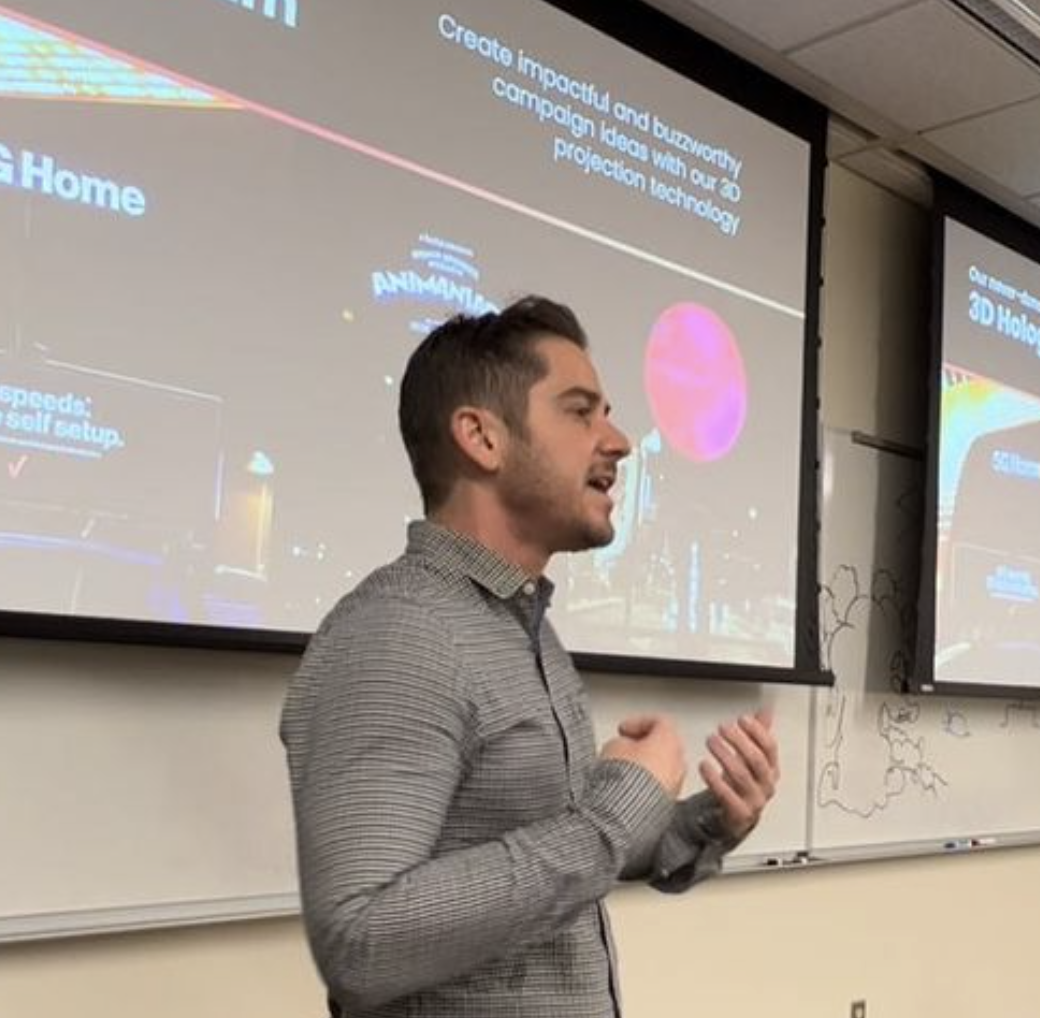What College Campuses Can Teach Us About Advertising
It isn’t every day that someone from Firefly visits their alma mater to talk shop and gain some perspective on the advertising industry.
I sat down via Zoom with Scott Rappaport, Senior Account Executive at Firefly, to learn more about his recent experience at Indiana University’s Media School.
MJ: Scott, I was scrolling through Instagram the other day, and I see pictures of you in a classroom at Indiana University. How did this opportunity come about?
SR: I was having lunch with Paul Santello (Senior Vice President at RPA), and he mentioned he was teaching an in-person 3-day Media Course on how data drives winning ad campaigns at IU’s Media School.
Although I was half-kidding, I asked him if he needed a guest lecturer. But the more we discussed it, the more we both got very excited about how my proposed topic and theme would really complement his lesson plan.
MJ: So what was it that made you excited about returning to class and sharing about Firefly with the next generation of marketers?
SR: Honestly, I’ll take any excuse to go back to Bloomington, and this was the perfect opportunity to do so. And of course, I was excited about the opportunity to give back what I’ve learned during and after my time at IU.
MJ: When you prepared your lesson plans, did you have any expectations in terms of the students’ familiarity with Firefly or digital out-of-home media in general?
SR: College students today are so digitally savvy, yet there’s so much about the real-world business aspect they don’t learn in school, especially regarding this specific course. When Paul chose the theme of his course, he looked at the Media School’s existing curriculum and noticed there wasn’t much in regards to utilizing data in advertising, so I approached it with the assumption that this would all be new to them.
With that in mind, throughout the lecture, I asked them various questions to see what they already know. Also, with Firefly’s ability to geo-fence real-world media in mind, I asked the students about which markets they’re originally from to help align examples to places or events they’re familiar with.
One of the students in the class who was from New York knew exactly who we were and mentioned that she sees our screens everywhere when she goes into the city. Yet she was very intrigued when I went over our targeting capabilities of how our screens’ ads and creative change when our vehicles enter specific neighborhoods, or during different dayparts. As examples, I pointed out how we can geo-fence luxury fashion brands to only run in the vicinity of high-end stores on the Upper East Side and Fifth Ave, while coffee ads will run in the morning around Grand Central.
MJ: Was anything different on or off-campus since the last time you were there?
SR: Yes, so much was still the same that I loved when I was a student, yet so much had changed to be even better than before. Throughout my visit, I appreciated how many aspects of Bloomington and IU’s campus were a microcosm of the theme of my lesson plan of bridging older traditional media formats with more modern capabilities.
The evolution of the media school and modernization of its new home in Franklin Hall was the perfect example. When my dad went to Indiana, it was the radio and television department, then was the telecommunications department when I was there, and now evolved to a much better name as the media school. Even how they modernized the interior of Franklin Hall with state-of-the-art Podcast, TV and Video Game Development Studios while preserving the beautiful limestone exterior that hasn’t changed since 1907 was another perfect example tied to my lesson theme.
MJ: So it’s not about, “out with the old and in with the new,” it’s about blending the two. Was this also part of your presentation?
SR: Exactly. I’m sure it’s not a surprise to those who know me, but I included IU Basketball analogies in the presentation. Although it could be considered blasphemy to some, I started the class off by referring to Coach Bobby Knight as an example of traditional and outdated. But quickly followed that up with how our new coach Mike Woodson, who was one of Coach Knight’s players, is a perfect example of “tradition embracing new.” Coach Woodson knows how to keep the best elements of Coach Knight’s legacy and IU’s traditions while combining his experience playing and coaching in the NBA to use the modern game to relate to young recruits and please all fans.
When done right, bringing that old and new together still works...just like in advertising.
From there, I segued into discussing media by bringing up the concept that the earliest forms of advertising go as far back as hieroglyphics and were essentially the first billboards. Since then, advertising has continued to evolve and improve as technology advances. We can’t steer away from what we know works, but we can use technology and data to make better-informed decisions and improve all media formats.
MJ: Do you think the topic of data and OOH was relevant to the students in terms of what they’re learning about now or interested in pursuing after graduation?
SR: Absolutely -- both in and out of the classroom. Since so much of their lives revolve around social media, I pointed out a couple of examples of how OOH drives social media data and metrics.
One example was when Kanye went viral by trolling Drake in Toronto by buying up a bunch of billboards in Drake’s hometown when they had competing album releases. And of course, another example was how our Ghostbusters Ecto1 Swarms with Ghost Hologram campaign drew 56M social media impressions on Halloween weekend.
Since I’m sure a majority of students want to work in social media, these were examples of how they don’t need to directly work for a social media company. They can create viral content through creative OOH and unique experiential activations. Every campaign presents an opportunity to create content for social and online channels. And digital formats, such as what we offer at Firefly, make it easier to create something buzzworthy on the fly.
MJ: Any advice for college graduates or those seeking to enter the advertising or marketing industries in the next few years?
SR: My advice is to always be learning from a variety of perspectives, whether it’s extra classes, podcasts, articles, books, documentaries, and especially internships. One of the great things about this experience is going back and sharing with these students things I wish I was taught in class. The industry changes so quickly, so it’s essential to keep learning even after graduation.
To illustrate that point, I learned a lot too from these students. Before we know it, they’ll be the next marketing and advertising leaders.
Scott Rappaport is a Senior Account Executive based in Los Angeles. Continue the conversation by connecting with him on LinkedIn.





